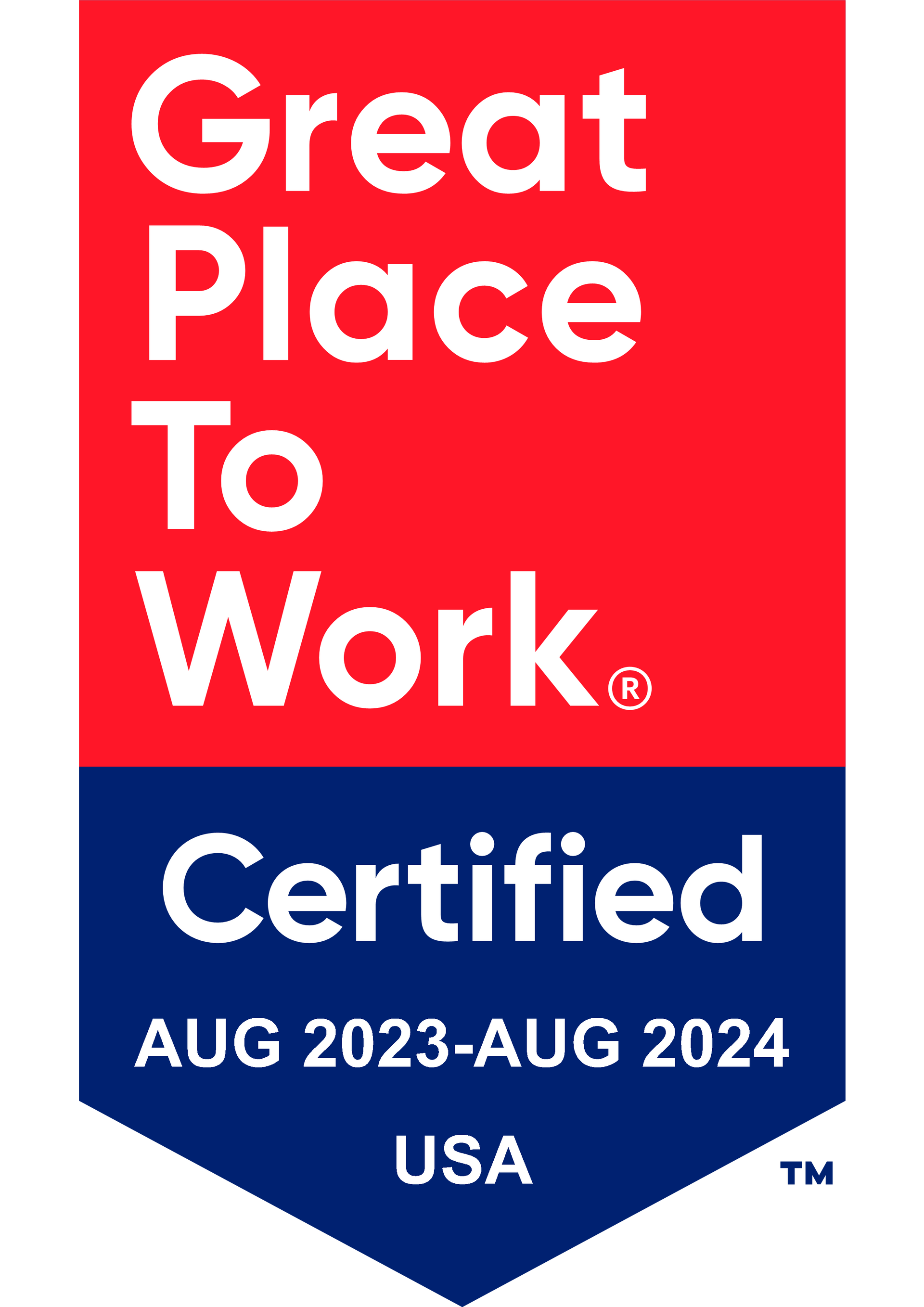Get in touch
408-366-8880
mymail@mailservice.com

Future Workforce Components
We all know the workplace today looks a lot different than it did just a couple of years ago. The pandemic helped accelerate changes in the workplace – such as shifts toward remote work and greater flexibility, the continued march of digital transformation, and a greater focus on collaboration.
Over the past few months, as companies slowly returned to regular in-person work, employees resignations spiked in a phenomenon dubbed the “Great Resignation.” As we continue to deal with the effects of these major cultural shifts, many organizations are reimagining the components that make up their workforce strategy.
Whether these changes are already underway or in your near future – we took a look at how the future of work will look in three popular scenarios – in-office, remote, and contingent.
COMPONENTS OF IN-OFFICE WORK
The shift to remote work during the pandemic convinced some companies, such as Twitter and Square, to encourage their employees to work remotely indefinitely. Other companies, however, realized the value of in-person collaboration and socialization more than ever. In a PriceWaterhouseCooper survey, 87% of respondents said they believed the office was necessary for collaboration and team-building.
While it may be safe to return to in-person work now, the office will likely never look the same as it once did. For offices to thrive in a rapidly changing work landscape, these changes will likely be necessary for the future of work:
FLEXIBLE SCHEDULES.
Even if the majority of work is done in person, companies are rethinking the flexibility of schedules. Over half of executive respondents in the PWC survey said that at least three in-office days a week are needed to maintain company culture. Hybrid offices may continue to utilize video chat and collaboration tools and “hot desking,” a system of organizing the office in which employees share workspaces depending on the days they’re in the office, instead of the traditional desks/cubes.
OFFICES WITH A MORE OPEN, FLEXIBLE PLAN.
If more employees are working from home, companies may rethink their office organization as well. Smaller offices offer lower overhead and allow for cozier spaces that promote more relationship-building and collaboration. A McKinsey survey of executives in 2020 found that organizations planned to reduce office space by 30%.
INCREASED EMPHASIS ON HEALTH AND WELLBEING.
Employees returning to in-office work will likely demand additional assurance that their employer has their health and wellbeing in mind. An Indeed survey found that 52% of respondents said they felt “burned out.” Employers will need to show concrete evidence of their efforts to create a healthy, safe, and sanitized workplace. They may offer benefits such as increased sick leave and child care assistance. Companies concerned about the impact of the Great Resignation may also be concerned about worker burnout. To that end, the future of in-person work will likely include efforts to prioritize employees’ mental health through regular check-ins and the establishment of mental health resources.
COMPONENTS OF REMOTE WORK
The increase of employees working from home during the pandemic has prompted companies to rethink their policies on remote work. According to
McKinsey & Company research, about 20% to 25% of employees worldwide could work from home between three and five days a week without a loss of productivity. And a
Boston Consulting Group survey found that 93% of global companies plan to make permanent changes to their remote work and meeting policies.
Here’s what the remote workplace may look like in the future.
DISTRIBUTION OF TEAMS.
Companies will no longer need to focus their recruiting efforts on a specific location. Instead, they’ll be able to spread their net wider to attract top-notch candidates from other areas. This also adds to diversity, increasing a company’s global reach.
HIGH-QUALITY DIGITAL TOOLS.
If workers are staying home indefinitely, they need best-in-class technology and tools to facilitate collaboration, as well as reimbursement for these at-home setups. Employees will increasingly rely on platforms that provide real-time data insights, enable seamless communication with other team members, and empower them to make decisions. Companies will need to determine which tools are meeting employees’ needs and which ones could be improved. They’ll also need to consider how to manage performance and employee evaluations on a remote basis.
EFFORTS TO MAINTAIN COMPANY CULTURE.
When teams are spread out and working remotely, companies will need to make a greater effort at maintaining company culture. That could mean weekly virtual chats and happy hours, regular in-person group outings, and sending stipends to team members for lunch delivery.
A GREATER EMPHASIS ON COMMUNICATION.
Remote employees whose companies weren’t sharing much about the future reported feeling anxious and burned out, according to a McKinsey study investigating employees’ thoughts on remote work. If employees continue working remotely, organizations will need to amplify their communication impact – sharing more with employees about the future, even if it’s not always certain. That could mean holding frequent virtual town halls on the state of the company and streaming regular video messages from executives.
A SCALED-BACK USE OF THE OFFICE FOR SPECIFIC EVENTS.
To fill in the social and interpersonal gaps, companies may continue to use the office space, albeit a scaled-back version, for important meetings and team-building events. New hires may begin their onboarding process in the office so they can meet some of their colleagues in person and experience the work culture in person.
CLEARER EXPECTATIONS AROUND WORK SCHEDULES.
If employees are going to work remotely, companies may need to set more clear expectations about the times they’re expected to be online and available.
COMPONENTS OF CONTINGENT WORK
The pandemic forced many companies to bring in more contingent workers as both a cost-saving measure and a way of increasing flexibility. In fact, 32% replaced full-time employees with contingent workers to save costs, according to Gartner research. And the rise of the gig economy has created more buzz about these roles for people who prefer a more flexible, temporary employment situation.
Workers hired on a contingency basis are only hired for a fixed amount of time or for specific projects. They can fall into a wide spectrum of roles – consultants, contractors, temp workers, freelancers, or part-time workers. Some may fill a very short-term need in the company, while others may have long-term contracts that last a year or more.
Having a pool of contingent workers is not only a cost-saving measure. It also saves companies on health insurance and other employee benefits and allows them access to high-quality hires that you don’t necessarily need to hire full-time. Contingent workers are often easier to train and also enjoy greater flexibility and the ability to work from anywhere.
Contingent workers tend to make the most sense for seasonal and project-based work and to fill gaps when employees are on extended medical or maternity leave or serving in the military.
When you manage contingent workers, you’ll need to take a different management style from you handle typical employees. However, you also want to make sure contingent workers don’t feel like they’re not a part of the team. In the future workforce, successfully managing a contingent workforce should have the following components:
USE OF OUTSOURCING PLATFORMS AND SERVICES TO HIRE AND ATTRACT CONTINGENT WORKERS.
To save time, companies may want to rely on employment and staffing agencies and vendors that provide a reliable supply of contingent workers. Outsourcing recruitment means organizations won’t have to worry about the burden of tax and compliance issues when handling contingent workers.
OPPORTUNITY TO ONBOARD AND TRAIN.
Your contingent workers should be part of the same onboarding, training, and performance management process as other employees. That’ll allow you to get your contingent workers trained more quickly and optimize their performance. In many scenarios, contingent workers won’t require the same level of training since they tend to have a highly specialized skill set.
SETTING CLEAR EXPECTATIONS.
Let contingent workers know from the start about the expected length of the contract and end date as well as pay rates. If you plan to track their performance, let them know that as well. Managing the performance of contingent workers can help you demonstrate the value of bringing in these workers and may even provide a basis for offering them full-time roles.
CREATION OF AN EMPLOYEE EXPERIENCE.
From the start of the contract to the end, contract workers should feel as connected to the company as any other employee. Celebrate occasions like birthdays, acknowledge them for their hard work, and make sure that other employees are involving them in decision-making. Also, give contingent workers the same access to top-notch technology and a comfortable workspace.
CONSIDERATION OF BENEFITS.
Contingent workers typically aren’t eligible for the same benefits as traditional employees – but that may be changing, too. If companies decide to expand their contingent worker basis, they may want to consider offering the same benefits they extend to full-time employees. This may help attract a wider candidate base and increase contingent workers’ sense of connection and morale. In 2020,
Google announced it would extend full benefits, including comprehensive health care and paid parental leave, to its contract and temporary workers by 2022.
THE FUTURE WORKPLACE IS NOW
The ever-changing workplace has created challenges as well as new opportunities to improve productivity, communication, and morale. Our team at KBI Benefits stands ready to help your organization navigate the many changes ahead. The future of work may look different in each workplace, but we continue to embrace a people-first approach. Whether your concern is HR, benefits, or technology, we’d love to hear from you.
References:
- https://www.pwc.com/us/en/library/covid-19/us-remote-work-survey.html
- https://www.mckinsey.com/featured-insights/future-of-work/the-future-of-work-after-covid-19
- https://www.forbes.com/sites/forbesbusinessdevelopmentcouncil/2021/07/23/five-predictions-for-the-future-of-in-office-work/?sh=530e586269f4
- https://www.cnbc.com/2021/06/09/5-ways-the-future-office-must-change-according-to-a-technologist.html
- https://www.indeed.com/lead/preventing-employee-burnout-report
- https://bcghendersoninstitute.com/the-hidden-tradeoffs-of-working-from-home-5297199a2d21?gi=8147c2f56f9e
- https://www.gartner.com/smarterwithgartner/9-future-of-work-trends-post-covid-19
- https://thehill.com/policy/technology/436939-google-will-require-healthcare-parental-leave-for-extended-workforce
Services
Latest Thinking




